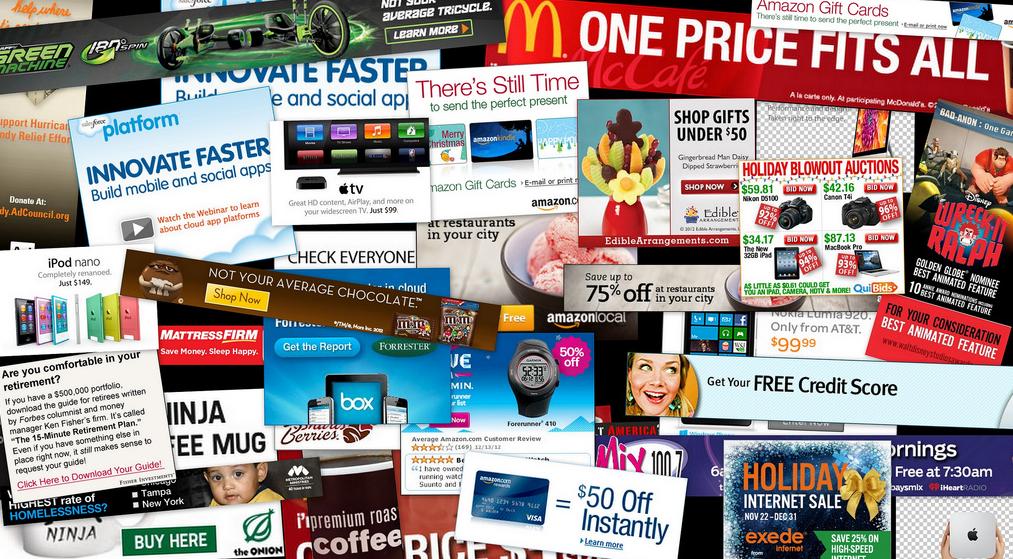In 2017, many questions arose regarding advertisers and the content they’re surrounded with.
Some brands saw their ads running alongside unsavory content, and so the discussion of brand safety in programmatic advertising began to gain much more traction.
It was a much-needed conversation that hadn’t yet had the proper light shone on it.
MediaRadar has put in a continuous effort to keep the conversation moving forward, steadily.
On November 9th, 2017, we held a panel event called, Transparency & Trust: What the Future Looks Like in a Programmatic World.
The panel, led by moderator Tanya Dua of Business Insider, included members of GroupM, Sizmek, LinkedIn, Vox Media, and The Trade Desk, joined by MediaRadar CEO, Todd Krizelman.
Representing GroupM on our panel, was Joe Barone, Managing Partner of the company – which is now the largest advertising media company in the world.
As the night unfolded, it became clear that Barone and GroupM were very much putting in the effort to lead the brand safety discussion. Much like Mark Pritchard of P&G, Barone took the reigns as a thought-leader, and a thought-provoker.
Throughout the night, Barone discussed the state of programmatic from both the publisher’s perspective and the client’s perspective, and brought forth a few startling industry facts.
One of the biggest questions we were left with following the panel was…
What are – and what aren’t – ad agencies telling their clients? In other words, how transparent are agencies being with clients? And how should publishers handle this?
That has become the ultimate question in the wake of brand safety concerns.
The problem for many advertisers is that they are not entirely aware of what information should be, and can be available to them.
As access to information continues to grow, however, making it imperative for publishers to make sure their clients know what they should be looking for when interacting with agencies.
Ad Viewability
Perhaps the most startling fact we heard during our panel was when Joe Barone stated that, “In every country around the world, between 40 and 50 percent of all ads we buy are non-viewable. Every client is wasting half of their dollars in every country around the world.”
From the publisher’s standpoint, this is known as ad fraud. From the client perspective, however, this presents the fact that brand safety issues can take a gigantic financial toll on a company.
Every client needs to know that the phrase “ad impression” does not always tell the full story.
If we hold ad viewability to a higher standard, however, agencies will no longer be able to boost their own ratings with fradulent ad impressions.
With such a heavy financial impact, ad viewability alone is enough of a reason to pursue transparency in programmatic advertising.
 Attribution
Attribution
Joe Barone also stated that, “One of the biggest problems is that we way too often give conversion credit to things that never happen.”
While this goes partially with the idea of ad viewability, this is also a way to clarify what leads advertisers to their success.
This is important for advertisers and agencies to more effectively optimize their strategies.
Barone added, “When you give credit to things that never happened, you don’t really know what drove your actual business. If we could build better (attribution) models and understand which part of the investment is working, then it’s going to optimize your plans to the real impressions that are viewable.”
The importance lies not in optimization itself, but the right kind of optimization.
By optimizing strategies to ad impressions that actually exist, advertisers can better understand their plans and trust that they know how to improve them.
Timely Honesty
In a lot of ways, being transparent simply means being honest. However, an agency that is truly transparent is one that will be honest at the right times, without being provoked.
Barone explicitly acknowledged the importance that GroupM clients hear the necessary news and facts directly from them.
He said, “We want our clients to hear from us. We don’t want them reading something in Business Insider, and then coming to us to say, ‘Hey, is it really true that you’ve been wasting our money?’ We want to be able to tell them, ‘here’s the problem, and here’s the solution.’ And most of these solutions are on the path to the best solution. We’re not there yet, but you at least have to build trust (with clients) by saying, ‘Here’s what we can do.'”
For agencies, being transparent can mean breaking bad news to clients. It could also mean letting clients know that the industry does in fact have its issues, and to prepare to see the effects of those issues.
Regardless of what agencies know will happen, it’s important for them to be honest about the state of the industry, what is likely to happen, and what could potentially happen.
Clients value trust very highly – on the agency side, and especially on the consumer-side. Advertisers rely heavily on brand equity to maintain trust with consumers.
The overall note here, is that it’s important for publishers, advertisers, and agencies to all continue working towards complete transparency.
While brand safety has been a lingering issue for some time, Joe Barone and the other panelists gave us, the audience of the panel, publishers, agencies and their clients a lot to think about moving forward.
For more info and insights on the current state of programmatic advertising, be sure to subscribe to our blog and newsroom!



